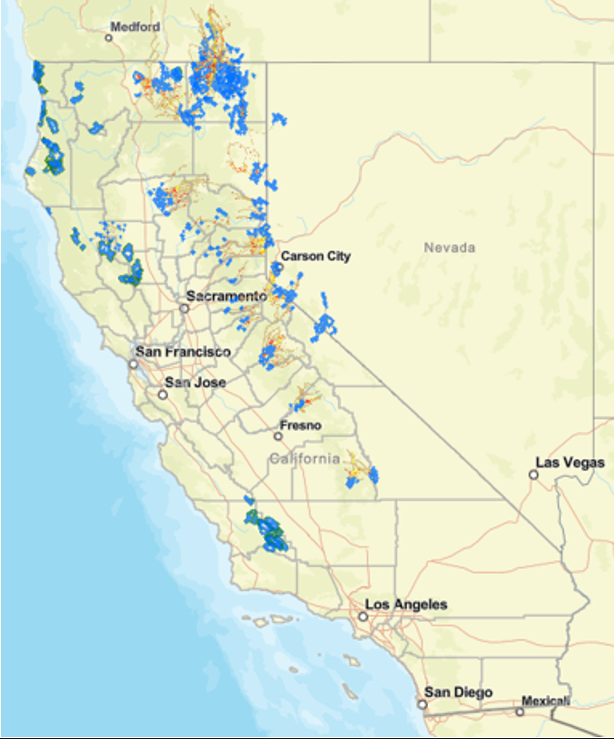Overview

California is home to several species of ungulates, including mule deer, elk, pronghorn, and bighorn sheep. Many of the ungulate herds in California are migratory and require large landscapes to persist, making them particularly vulnerable to habitat loss and fragmentation. Connectivity between seasonal ranges is therefore crucial to conserve these charismatic species and to facilitate their movement across the landscape. In addition to migration corridors, mapping and conserving high-use winter range habitat is also essential to maintain ungulate herd population viability.
In 2020, efforts began to analyze GPS collar datasets that provide accurate location information for ungulate individuals over time. Using this collar data from historical and ongoing projects across the state, ungulate population-level migration corridors, stopovers, and winter range habitats are being mapped and prioritized for conservation. Home range analyses have also been conducted for non-migratory herds.
This interactive story map explores many of CDFW's ungulate migration products, describing the data and analytical processes. A complete list of ungulate migration products and home ranges available to the public can be viewed in the Ungulate Migration Viewer by using the button below.
Spatial Data and Connectivity Viewers
Getting Started in BIOS 6 (PDF)
Launch point for BIOS 6, the CDFW spatial data library and viewer
Movement data for California deer, elk, and pronghorn
Reports*
*California ungulate herds are represented in this series beginning with Volume 2.